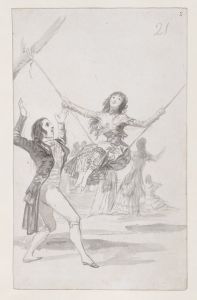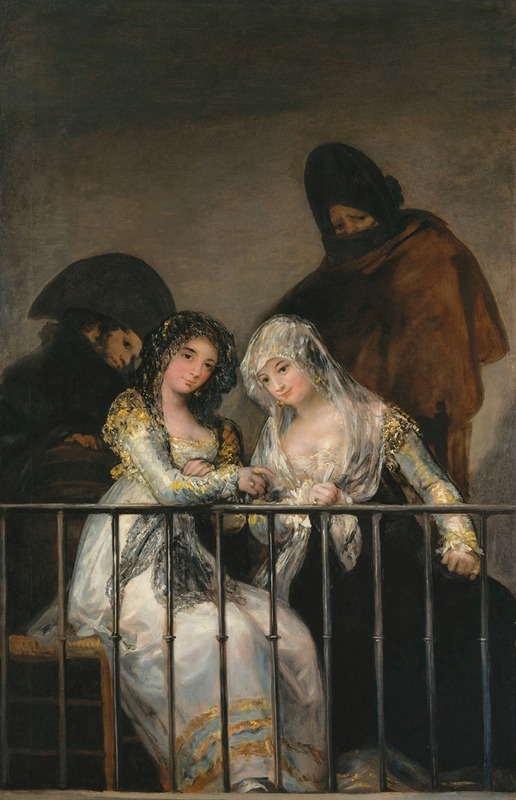
Majas on a Balcony
A hand-painted replica of Francisco de Goya’s masterpiece Majas on a Balcony, meticulously crafted by professional artists to capture the true essence of the original. Each piece is created with museum-quality canvas and rare mineral pigments, carefully painted by experienced artists with delicate brushstrokes and rich, layered colors to perfectly recreate the texture of the original artwork. Unlike machine-printed reproductions, this hand-painted version brings the painting to life, infused with the artist’s emotions and skill in every stroke. Whether for personal collection or home decoration, it instantly elevates the artistic atmosphere of any space.
Majas on a Balcony is a painting attributed to the Spanish artist Francisco de Goya, created in the early 19th century. The artwork depicts two young women, known as "majas," dressed in traditional Spanish attire, seated on a balcony. They are accompanied by two shadowy male figures standing behind them, whose presence adds an air of mystery and intrigue to the scene. The painting is notable for its dramatic use of light and shadow, a hallmark of Goya's style, which enhances the contrast between the brightly lit figures of the women and the darker, more ambiguous forms of the men.
The composition of the painting draws the viewer's attention to the majas, who are adorned in elegant clothing and mantillas, a type of lace or silk shawl traditionally worn in Spain. Their expressions are enigmatic, with one maja gazing directly at the viewer while the other looks off to the side. The men behind them are rendered in darker tones, their faces partially obscured, which has led to interpretations of their role as protectors, suitors, or even potential threats. However, the exact nature of their relationship to the women remains unclear.
The painting is often associated with Goya's exploration of Spanish social customs and his fascination with the maja and majo culture, which celebrated the flamboyant and rebellious spirit of the lower classes in 18th and 19th-century Spain. The majas were known for their distinctive fashion and bold demeanor, and they frequently appeared in Goya's works as symbols of both allure and defiance.
The provenance of Majas on a Balcony has been a subject of scholarly debate. While traditionally attributed to Goya, some art historians have questioned its authorship, suggesting it may have been painted by one of his followers or imitators. This uncertainty arises from differences in technique and stylistic elements compared to Goya's other works. Despite these debates, the painting remains widely associated with Goya and is often included in discussions of his oeuvre.
Today, Majas on a Balcony is housed in a private collection, limiting public access to the artwork. Its exact date of creation is not definitively known, but it is generally believed to have been painted during Goya's mature period, when he was deeply engaged in exploring themes of human behavior, societal norms, and the interplay of light and shadow.
As with many of Goya's works, Majas on a Balcony invites multiple interpretations and continues to captivate viewers with its enigmatic subject matter and masterful execution.





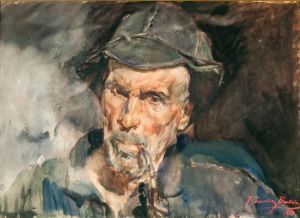
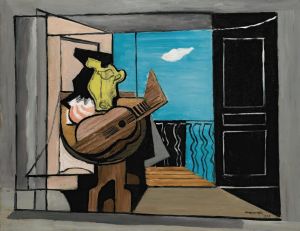
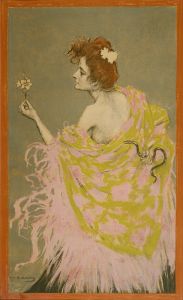

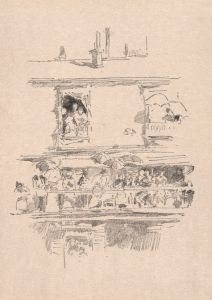
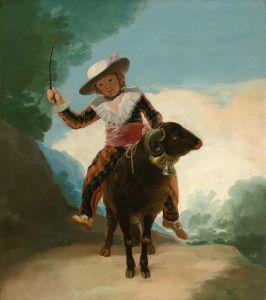
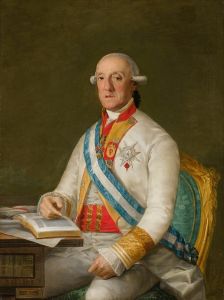
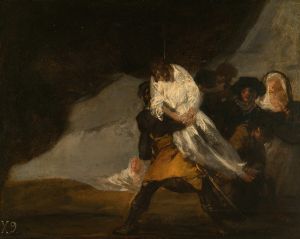
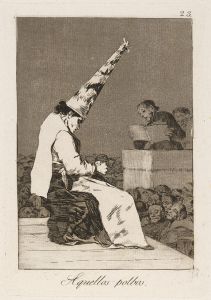
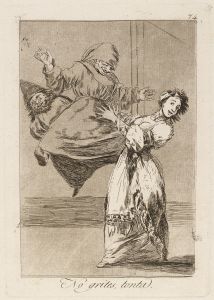
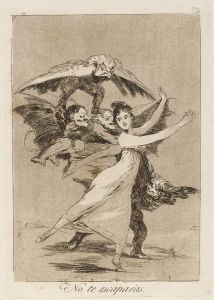
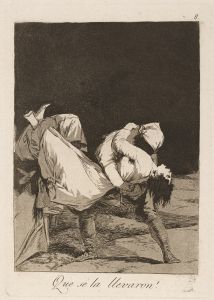
![Two Heads Are Better Than One [Poor Folly]](/imgs/264668/s/francisco-de-goya-two-heads-are-better-than-one-poor-folly-401b05c1.jpg)
